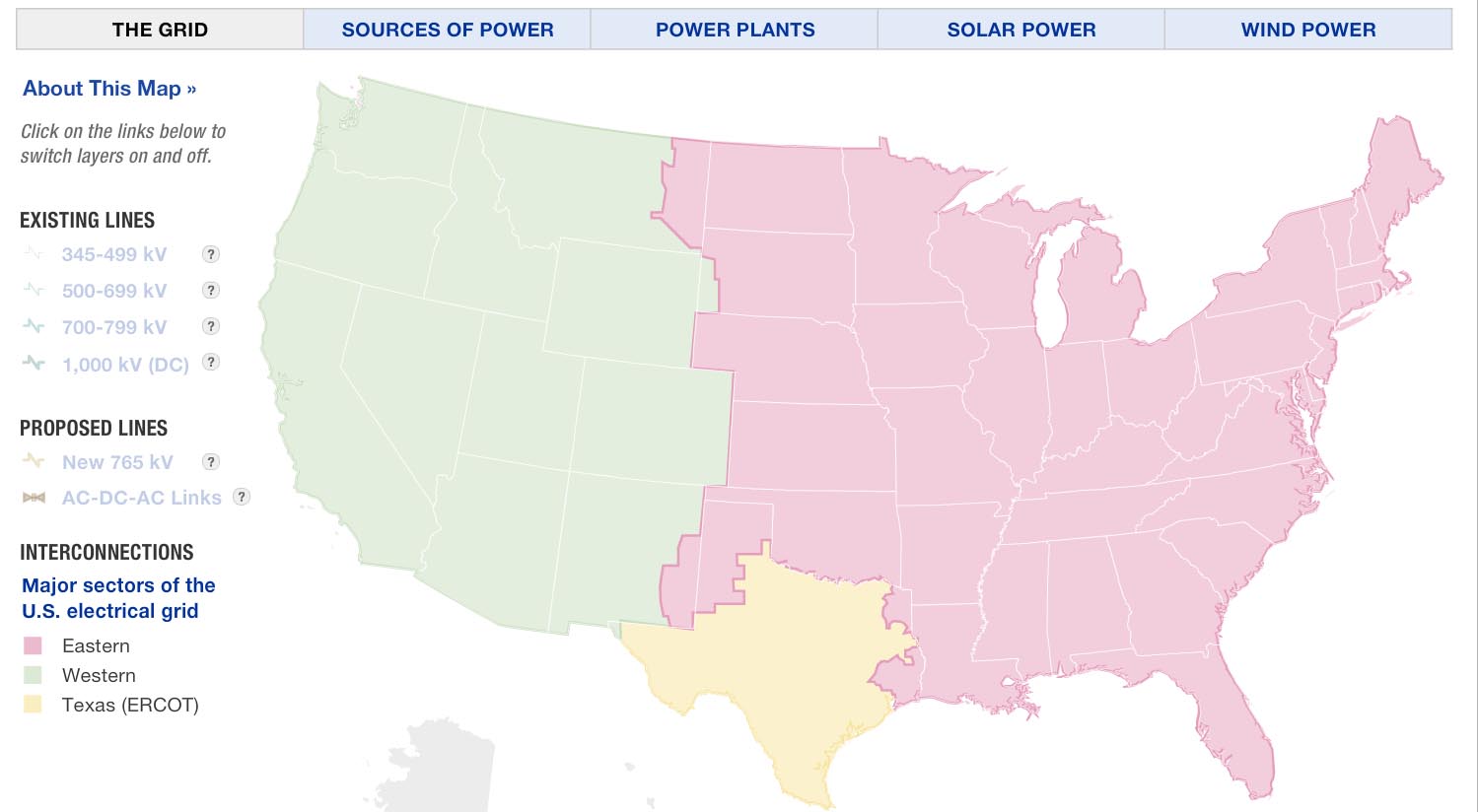Electric power in the United States is a $350 billion per year business, and touches literally every corner of the economy. The “power grid” in North America is massive in scale and scope. By plugging a computer into a wall socket to read this lesson, you are connecting yourself to a stupendously complex network of hundreds of large power plants and many thousands of miles of transmission wires. The scope of the North American grid is shown in the figure below.
SOURCE: https://www.e-education.psu.edu/ebf483/node/643
Figure 1.1: The scope of the North American power grid
Source: North American Electric Reliability Council

Electricity in the United States is delivered via three large power grids (you also saw this in figure 1.1). One grid, the “Eastern Interconnect” serves the area east of the Rocky Mountains; a second, the “Western Interconnect,” serves the area west of the Rocky Mountains; and a third, the “Electric Reliability Council of Texas (ERCOT)” grid serves most of the state of Texas. If you are curious about why Texas has its own power grid, you can read more about that in the following article: Why Does Texas Have Its Own Power Grid?
Each of the three big grid interconnects is actually run by a number of different utility companies in parallel. These companies, known technically as “balancing authorities,” each control a regional portion of the power grid. Some of these balancing authorities are large, controlling the grid in multiple states, while others are very small, controlling portions of the grid no larger than the size of a city.
SOURCE: https://www.e-education.psu.edu/ebf483/node/4

Regional Transmission Organizations (RTOs) operate the high voltage transmission grid and run electricity markets. They also engage in system planning to ensure that there is sufficient generation and transmission to avoid blackouts. Most of them operate as non-profit corporations and do not actually own power plants or transmission wires. How they ensure a reliably functioning power grid without actually owning any equipment is a complex process that we’ll learn more about in this course. RTOs currently operate in over half of US states, representing around 75% of all electricity consumption in the country, as shown in the figure below.
SOURCE: https://www.e-education.psu.edu/ebf483/node/641

Figure 1.3: Regional Transmission Organizations
Source: Federal Energy Regulatory Commission
The U.S. Electricity System in 15 Maps
http://www.sparklibrary.com/the-u-s-electricity-system-in-15-maps
U.S. Electricity Grid & Markets
https://www.epa.gov/greenpower/us-electricity-grid-markets

